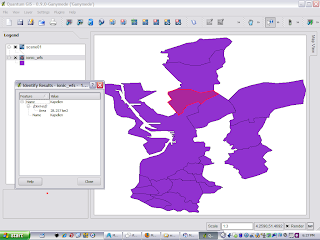
Recently a Brazil targeted version of WorldWind was released, called GeoPortal-3D. Chad talks about it in his blog. The main additional features are Brazil specific placenames and imagery, the other useful new feature that quickly meets the eye is the interactive compass. This behaves in a manner very similar to the Google Earth navigation widget, just does not fade out to a normal compass when not in use, I guess we can merge one of WorldWind's existing compasses to achieve the same result. Anyway since WorldWind already has a few navigators another one which is familiar to people will do no harm and offer more choice.

Thus began the effort with Reflector and FileGenerator to create the same plugin in the WorldWind core tree. After a few fixes due to code upgrade and path changes the plugin works without a hitch. Useful new addition to moving around the globe. Other than this there are a few more plugins added in GeoPortal with some database features which would be useful to backport.
Back-porting from binaries raises the specter of intellectual rights protection and code security, I guess this is where assembly signing can come in for authenticity verification and this nasty bit of obfuscation can be used to deter the not so eager disassembler.







